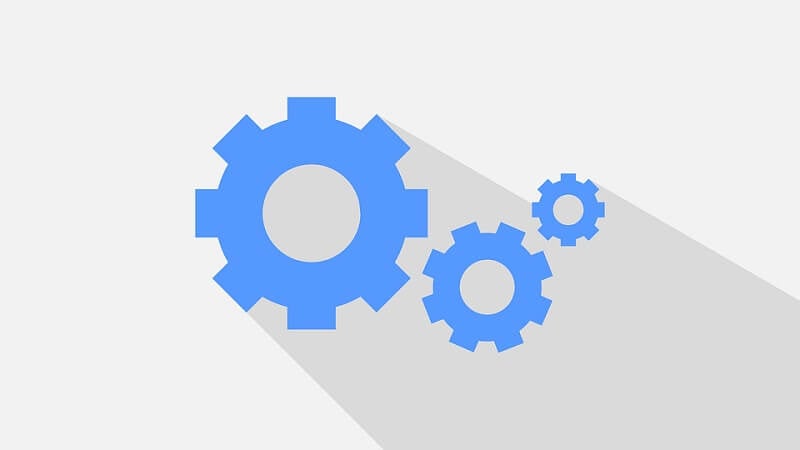John is the Director of Communications at Consensus. For the past three years, he’s been searching ...
Close more deals with
Demo Automation.
Watch a Demo
As the line between presales and sales roles continues to blur, success for both account executives and sales engineers hinges on their ability to collaborate and communicate effectively. Though the details of these roles often vary from business to business, there are a few universal truths to the AE-SE dynamic—the biggest being that when properly aligned, they maximize one another’s positive impact on the entire business.
Nurturing the working relationship between these teams accelerates a business’ ability to solve problems for its customers and easily demonstrates to those customers how valuable a partnership with your company can be. Here’s a look at what sets these important roles apart, and four keys to consider when seeking a cure for disjointed AE-SE relations.
Defining the Roles for AE and SE
We know you know this. But writing it out helps to crystalize what should change.
Account executives (hunter) carry quota and focus on the commercial or financial aspects of a deal. They run point on building the relationships with prospective or existing customers, finding champions, guiding them through the buying cycle to close, etc. Depending on the size and funnel performance of a business, the AE might self-source some or all of their pipeline, in partnership with marketing and business development. When teams don’t hit targets, AEs are generally the first to go. So there’s quite a bit of pressure there.
For complex purchases, AEs generally don’t have as much technical expertise to resolve intricate product capability, functionality or architectural problems, but they partner with customers to align the appropriate resources, maintain buyer journey progression and coordinate the contractual (including financial) aspects of a deal.
This is where AEs and SE differ. AEs are the customer’s advocate from start to finish and are tasked primarily with keeping deals on track (sometimes even sticking around after buyers ink a deal) whereas the SE generally enters discussions in the middle of an opportunity cycle (although the nature of their relationship with customers, and level of engagement, is changing).
The sales engineer (also called solutions consultant, pre-sales engineer, applications engineer, systems engineer or solutions engineer) addresses technical questions that come up in demos, in discovery, and in consultations about product fit within the buyer’s existing systems. They outline in detail how products will solve the customer’s problems or help them achieve clearly defined objectives.
Though SEs are frequently mistaken as a support role, they are defined by a uniquely qualified expertise in strategic consulting conversations and product knowledge, preparing and delivering a range of demo types, including technical demos which are often tailor-made for individual customer needs, and providing key accounts with hands-on service.
Each of these roles owns a different aspect of the buying journey, but they perform the same basic function—to establish trust with customers and coach them through their process so they can move forward with confidence. To that end, both AEs and SEs are expected to construct valuable partnerships and provide positive customer experiences.
Key Activities vs Actual Activities
It’s impossible to talk about streamlining a process without addressing how different roles spend their time. For example, according to our 2021 Sales Engineering Compensation & Workload Report research, 80% of SE teams say they are primarily responsible for “intro demos” and RFPs, which are a less effective use of their time than more specialized activities like technical demos and consultations.
Even the reps are signaling that they’re wasting time! What do you think that does to the quality of their collaboration?
A daily activity breakdown for AEs and SEs can quickly highlight where your team excels while exposing weak areas in need of some improvement. Achieving the level of transparency needed to clearly understand which activities are currently leading to real results is crucial for leaders to facilitate healthy relationships between these two groups.
So, which activities are most worth the time? What are the repetitive activities hindering each role’s ability to focus on more impactful activities? How can existing processes be adjusted to match meaningful KPIs? The only way to know for sure is to speak candidly with your team about how they fill their time each day. Consider utilizing a survey to evaluate how much time per week (or per month) is being afforded activities that ultimately fail to move the needle, and develop a plan with each team to engage in more worthwhile activities.
Key activities for account executives might include the following:
- Client Prospecting
- Constructing Sales Pitches
- Nurturing Client Relationships
- Resolving Client FAQs
- Upselling Accounts
- Data Analysis
- Removing Client Roadblocks
Potential activities to list on your survey might include the following for sales engineers:
- Discovery
- Technical Demos
- POCs
- Consulting Calls
- Repetitive “Micro Demos”
- Repetitive Standard “Qualifying Demos”
- Repetitive FAQ and Closing Demos
- Customer Support
- Improving Product Knowledge
- Planning and Architecting Solutions
- RFPs
- Training and Mentoring
If SEs are busy performing repetitive early-stage demos for unqualified customers (more on that later), they are wasting time that might otherwise be spent on activities with demo qualified buyers that lead to more close won deals faster. SEs may quickly burn out on low impact tasks and AEs may risk losing clients to impatience and bad buying experiences. The connection between the two starts to unravel.
The answers to the key activities vs. actual activities challenge will be unique to each organization, but identifying those bottlenecks stalling your business and reorienting SE and AE key activities accordingly goes a long way toward building trust.
Demo Lag Time
Disjointed relationships within a company will inevitably manifest themselves to customers by the experience you create. In the world of presales, misalignment between AEs and SEs frequently leads to longer wait times for demos, worsening the customer experience, and risking a potential close-won deal before you get a chance to demonstrate value. After all, it’s difficult to present a solution to a business problem convincingly when your own business is operating at less-than-optimal efficiency.
Recent research shows the average wait time between a demo request and the client receiving said demo is five business days, with more than 60% of respondents indicating prospects had to wait at least a week. Another 20% said they had prospects waiting at least two full weeks for a demo. A good sales organization simply can’t endure extensive lag times and expect the connection between sales engineers and account executives to remain strong.
Waiting two weeks to explain what might be interesting or exciting about a product to prospective customers undermines the partnership you’re attempting to create. Too often this delay results in wasted resources, extended deal cycle time, employee burnout and too many lost deals. AEs who treat their SE partners as “gophers,” assistants or sales support underlings contribute to this mismanagement of resources by misunderstanding the sales engineer’s true role on the team as a technical expert and problem-solver.
Conversely, engineers failing to communicate with their account executives can easily miss which product features will most benefit the client or waste time on technical information beyond what the client requires. In extreme cases, they can even derail potential deals by simply not providing the type of hands-on client-care required to earn their business. When it comes to a potential partnership, effective engineers need to see the complete picture, understand a business’ basic structure and pain points, and present a thorough solution to these particular challenges.
Fixing delays between AE introductions and SE demonstrations begins with clearly defining roles between the two, and respecting what each of these roles brings to the table when aiding a prospective client with a business problem.
Unqualified Demo Rates
Most teams already have some measure of qualification filter set up to assist the sales team and preserve available capacity (like the number of hours each day engineers have to conduct demos). A good qualification system keeps AEs focused on activating new accounts, AMs on expanding existing customers, and avoids the clogging calendars.
Based on our research in the Sales Engineering Compensation and Workload report , there’s a high probability of unqualified leads leaking onto your schedules that can be either automated or pushed through another stage of qualification before garnering your team’s personal attention. More than half of respondents reported 30% or more of their demos were presented to unqualified recipients. One in five respondents said more than half of their demos were unqualified.
Every revenue team has their metrics for measuring success and effectiveness. Marketing has MQL or marketing attributed pipeline. Sales has SQL and conversion rates through the funnel. What about presales?
Consider implementing a DQL (Demo Qualified Lead) classification (or at least track it as a means for verifying the quality of SE time spent with customers). Before an SE’s direct attention is required, test whether or not a lead engages with a short interactive demo video. See whether or not they share it with additional stakeholders. Find a way to measure how much of it they each view and what they signal as their top priorities. You can keep these fairly short and simple, but they’ll effectively weed out uninterested parties before SE teams get involved.
Unqualified demo rates represent a major detriment to your daily operations, but also a major opportunity. The ability to trim unnecessary live demo time out of each day and focus more on qualified opportunities can spur a fair amount of growth, reduce demo lag time, shorten sales cycles, and boost the available bandwidth of SEs and AEs alike to handle more high-leverage activities.
Working as a Team to Carry Quota
No matter how defined the AE and SE roles may be within your company, customers can inadvertently blur the lines between pre- and post-sales. When a customer needs help, they’ll turn to the people who provided them with solutions in the past—and if the problem was a technical one, chances are a sales engineer might find themselves fielding emails better-suited for an account manager.
The more these responsibilities begin to bleed into one another, the more difficult determining quotas can be. Deciding who carries what quota and how to attribute sales properly is critical to facilitating healthy AE-SE relationships. In theory, account executives guide the buying process and develop prospective buyers into loyal, lifetime customers. In practice, the technical solutions provided by sales engineers can often make the difference in an AE’s ability to close the sale (thus, the purpose of this partnership in the first place).
Solutions will vary across businesses and even industries, but research shows as much as a 9% increase in annual on-target earnings (OTE) among sales practitioners who carried a quota compared to those who didn’t. Generally, it falls to the high-upside account managers to make the most of commissions and closing deals above quota, while sales engineers are guaranteed a higher base salary with lower potential upside.
The quota and pay structure in place for AE and SE teams must enforce the mutual nature of each role’s success. There must always be incentive to provide the best service possible as quickly as possible to produce the best solutions for each customer.
—
Looking to strengthen your team and establish successful business relationships? Consensus can help. Companies of all sizes apply our technology to everyday challenges in B2B sales to facilitate fast and easy purchasing decisions. Contact Consensus to see what role interactive demos can play in your pre-sales process.





